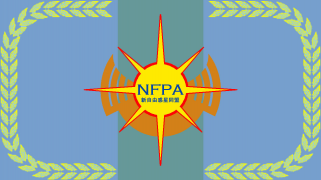Costa Fierro wrote:The Soodean Imperium wrote:That's what I'd suspected. But here's my problem:
VERY WIP
The main shipping areas are in the northeast of Donggyŏng proper (north bank city), and in the east of Gyŏngpo (south bank city). The most active intercity line (both people and freight) would be the one to the southwest, with the one directly due north at a distant second. I can get Donggyŏng port freight to go north along the coastal line, which only passes through a few large towns, and get Gyŏngpo port freight to follow the south peninsula line, which eventually loops around to head southwest, but I can't find an easy way to send Donggyŏng port freight southwest without running the long way through a ~15-million-person city.
This is what led me to consider dedicated freight lines through the city center, which would at least allow me to bypass the busy stations and avoid passenger traffic. These could either be directly adjacent to the existing passenger lines or following a separate course with wider and fewer tunnels. The terrain west of Donggyŏng and south of Gyŏngpo is mildly mountainous (think Beijing not Denver) which makes a loop around the outskirts difficult but not impossible, and I would be willing to follow that path if it's deemed more feasible.
Timeline-wise, the original railway from Donggyŏng port inland would have been built in the 1870s or thereabouts, when the city limits were much smaller and passenger travel was lighter. Though I guess that can't stop me from re-routing rail freight onto new lines in the 1990s, when economic growth brings massive increases in both urban area and trade volume.
Usually there'd be at least one rail corridor for intercity passenger rail services so they wouldn't need to use smaller commuter rail networks. In that case the city would likely have two branch lines that connect to the main rail corridor. Industrial areas would largely be devoid of any commuter or passenger rail anyway. Or, transfer the cargo using trucks.
Does this mean I can safely run freight trains through the city as long as they use the intercity rail corridors? I'm still OK with making outer freight lines that bypass the city and its mountains but running them directly would shave maybe 100km off the distance.
As is, the rail lines marked on the map would be intercity corridors, or at least regional rail lines. I haven't even added commuter rail within the metropolitan area, which I might put on a smaller gauge and merge into the metro system. Really though I think I need to read up on the different categories of commuter rail, how they work in different countries... an S-Bahn style system might be nice.





